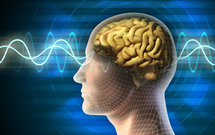
Neuroscience offers an exciting glimpse into how the human brain develops and changes over time. And while theories on the brain and its development abound, brain research can help to clear up a handful of myths about how students learn and develop.
The human brain—a biological organ that weighs about 3 pounds—develops as a result of a combination of the genetic program children inherit from both of their parents. Out of about 70 watts of power, the human brain uses only about 15—similar to what an idling laptop or the light inside a refrigerator use.
The typical 8-year-old child uses about half of his or her body’s energy to run the brain. It is an efficient device, but one that uses a lot of energy, said Sam Wang, an associate professor of neuroscience in Princeton University’s Department of Molecular Biology. Wang, also of the Princeton Neuroscience Institute, has co-authored two books about the human brain.
“The brain is always changing,” Wang said during a Sept. 12 webinar. For instance, a 6-year-old child who is reading initially uses regions that are distributed across both sides of the brain. As the child grows older, those brain regions cluster over to the left side of the brain in most people.
Wang addressed five myths about learning, using brain research to refute commonly-held but incorrect assumptions.
Myth 1: ADHD isn’t real, or conversely is permanent.
The brain develops from back to front, and the prefrontal cortex only reaches full maturity when a person reaches his or her 20s or 30s. Attention Deficit Hyperactivity Disorder has been shown to be associated with a slowing of that growth trajectory, Wang said. Children with ADHD are typically two to three years behind other children in terms of cortical growth, meaning that the front of their brain is a little bit behind. Half of those children “catch up” eventually.
Myth 2: “Redshirting” kindergarteners is, on average, good for child’s mental development.
One out of 11 kindergarten-age children ready for kindergarten will be held back from kindergarten each year in an attempt to make that child more ready for schoolwork and give him or her an advantage over other children.
“As it turns out, this practice is not helpful for child achievement. … Any advantages disappear by the end of sixth grade,” Wang said. In fact, children who are older for their grade level don’t do quite as well as children who are young for their grade level.
Children are social learners, Wang said, and they learn from one another and learn through play. If a child’s peers are slightly more advanced scholastically or emotionally, a child has those peers to learn from and to use as examples. Children who are young for their school year typically have more advanced peers to draw upon and learn from.
Myth 3: IQ is the biggest predictor of student achievement.
In fact, the ability to show self-restraint at an early age is twice as predictive as IQ, Wang said. Willpower and self-restraint are more important.
“It’s more important to build up self-control, and it’s more important to praise a child for trying,” Wang said. “Praise for effort, not for intrinsic ability.”
Myth 4: Learning styles are a good way to guide teaching practice.
The brain’s willpower mechanisms are expanded by practice—what brains do often, they do well, Wang said. This includes activities such as brushing your teeth with your non-dominant hand to build up brain circuitry.
Students can build up a brain circuit by activating it and doing that specific activity often.
Myth 5: Autism is on the rise and is strongly affected by environmental influence.
Researchers believe that autism itself is not increasing in rapid numbers, but diagnoses are, owing to better methods of diagnosing autism. Much of autism is more and more being linked to genetics, Wang said.
Stress, particularly in the mother’s second and third trimester, can affect the brain during early development.
For instance, autism is more likely in mothers who had to flee a hurricane or go without shelter or basic necessities during an ice storm, Wang said.
“The recognized rate of autism is going up, but in fact, it is quite possible that the characteristics of children have not changed in the last 20 years,” Wang said, referring to the belief that autism rates are not rising so much as doctors’ ability to diagnose autism is improving.
The relative risk for autism is roughly 1 in 100. Having older parents increases the risk a bit, but other things, such as emigrating while pregnant and fleeing a hurricane, increase the risk much more—2 times more likely and 3 times more likely, respectively.
A child born more than 6 weeks premature is 7 times more likely to be diagnosed with autism, and a child who receives no social attention or interaction in an orphanage is 8 times more likely to land on the autism spectrum.
“Relative to all these risks, the risk of genetics is enormous,” Wang said.
Sharing half of your DNA with a fraternal twin increases your own likelihood for autism 22 times, and having an identical twin on the autism spectrum makes you 84 times more likely to be diagnosed with autism.
“Autism is a really interesting example about there being an interplay between genes and environment,” Wang said. “It may be a case of bad input to the developing cerebral cortex—the front part of the brain.”
- 4 ways to support work-based learning - April 23, 2024
- Prioritizing inclusivity in game-based learning - April 22, 2024
- Friday 5: Universal Design for Learning - April 19, 2024


Comments are closed.